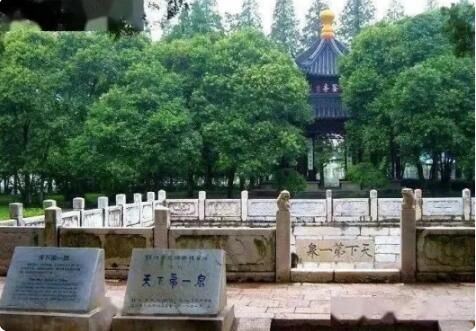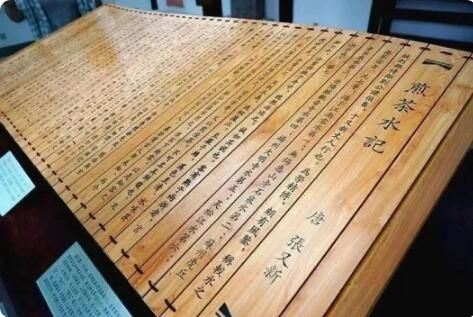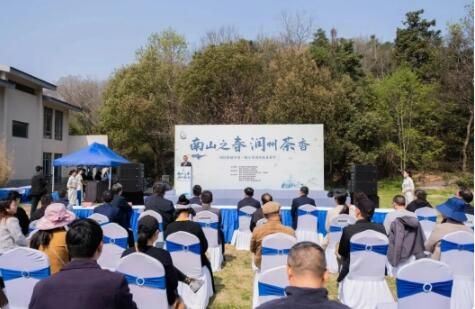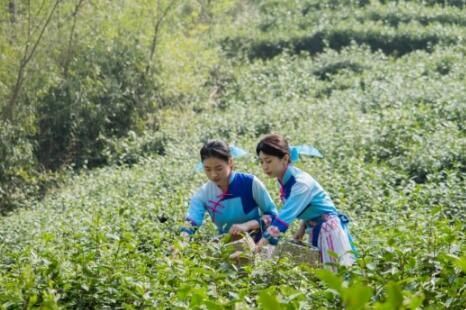Zhenjiang is a key production area for famous high-quality Green Tea in China and a major tea-producing region in Jiangsu Province. The tea industry is one of the most distinctive industries in Zhenjiang's hilly areas and a pillar industry for agricultural efficiency and farmers' income growth in Zhenjiang. The quality of Zhenjiang tea owes much to the city's efforts in developing multiple aspects of the tea industry, including Tea culture, tea technology, tea branding, and tea tourism.
Noble Origins with a Rich Cultural Heritage
Zhenjiang, located at the confluence of the Yangtze River and the Grand Canal, is a region characterized by hills and a typical monsoon climate, with distinct seasons. Its soil, water, and light conditions are ideal for tea tree growth. According to the “Tea Classic” written by Lu Yu, the Sage of Tea, “There are thirty-six provinces producing tea in the world; the best is Huzhou in Zhejiang West. Changzhou ranks second, followed by Yizhou, Hangzhou, Muzhou, and Shezhou, while Runzhou and Suzhou are further down the list.” During the Tang Dynasty, Zhenjiang was known as Runzhou, indicating that it was already considered an important tea-producing area at that time.
Historical records show that Zhenjiang has produced renowned teas, such as the Wuzhou Mountain Cloud and Mist Tea, Biluochun, and Kongqing Tea. Biluochun tea from the mountains in the west of the region won a gold medal at the Nanjing Industrial Promotion Fair in 1910. The Kongqing Tea from Mount Wufeng in Jurong was awarded a gold prize at the Panama International Exposition.
Good tea also requires good water, and Zhenjiang has been blessed with famous springs since ancient times. In his “Record of Water for Tea Boiling,” Zhang Youxin of the Tang Dynasty recorded that the tea expert Liu Beichu appraised several well-known springs and ranked them according to their suitability for tea brewing. Among these, the Zhongling Spring in Zhenjiang was rated first, earning it the title of “The Number One Spring in the World” and becoming a source of pride for the people of Zhenjiang.

Source: Zhenjiang Release
Drinking tea, fundamentally, is about drinking the culture. The idiom “replacing wine with tea” originated in Zhenjiang. According to “Records of the Three Kingdoms” by Chen Shou, Sun Hao, the last emperor of Eastern Wu, had a fondness for alcohol and stipulated that guests must drink at least seven liters during banquets. However, he held Wei Yao, a learned court official, in high regard and allowed him to substitute his wine with tea, which is the earliest recorded instance of “replacing wine with tea.”
Throughout history, many famous scholars and literati have come to Zhenjiang to enjoy its springs and tea, composing poems and songs in praise. For example, in the Yuan Dynasty, Sa Dula wrote, “There is not much good scenery on the mountain, but the spring here is renowned throughout the world.” In the Ming Dynasty, Tang Yin composed a poem: “As the sun sets, I do not yet cross the Canglang Ferry, having enjoyed the Zhongling Spring to cleanse my heart.” And in the Southern Song Dynasty, Wen Tianxiang wrote, “The first spring by the Yangzi River, where precious metals were cast to create profound depths. A man cuts off the head of Loulan, then leisurely tastes tea and pays homage to the Sage of Tea.”

Source: Zhenjiang Release
Building Brands, Scenting the Nation with Renowned Teas
Zhenjiang's teas have always come from noble origins and have superior natural endowments. To further develop the tea industry, Zhenjiang has focused on building regional brands represented by “Jinshan Green Bud,” amplifying brand value, and forming a large regional brand led by “Jinshan Green Bud.”
Jinshan Green Bud is a specialty tea from Zhenjiang City and is protected under the national agricultural product geographical indication. When brewed, the tea sinks and stands upright in the cup, resembling the inverted image of the Jinshan Pagoda in the Yangtze River. This is how Zhenjiang's fine tea came to be known as “Zhenjiang Jinshan Green Bud,” renowned for its “green color, fragrant aroma, fresh taste, and beautiful appearance.”
In 1982, under the guidance of Chen Yuan, a leading figure in the Chinese Tea industry and professor at Anhui Agricultural College, Zhenjiang launched a project to create “Jinshan Green Bud.” In 1985, after joint efforts by seven organizations, including the Linke Research Institute of Zhenjiang City, the Xiashe Tea Field in Jurong, and the Gaoci Tea Field, “Jinshan Green Bud” was successfully developed. It has since won numerous awards in national green tea competitions and has taken its place among the nation's top-tier teas.
During harvest, the length of the buds and leaves must be around 3 centimeters, with uniform tenderness, purity, and freshness. Approximately 36,000 buds are required to produce one pound of dried tea. Brewed, the green buds are flat and slender, with a green color, visible silver hairs, a fresh and refreshing flavor, a tender green infusion, and a delicate aroma…
The most famous tea in Zhenjiang is undoubtedly Jinshan Green Bud. Other well-known local teas include Maoshan Longqing, Baohua Yunsun, Sanshan Fragrant Tea, Changshan Sword Tip, and Nanshan Drop Green, all enjoying great renown. Notably, at the opening ceremony of the 28th Shanghai International Tea Culture and Tourism Festival, the results of the “Top Ten Famous Teas in China” competition were announced. The “Changshan Sword Tip” produced by the Sanquan Tea Field in Dantu District, Zhenjiang, and the “Nanshan Drop Green” produced by the Nanshan Tea Research Institute in Zhenjiang City both received the highest award in the annual selection, “Top Ten Famous Teas in China.”
Fusion of Tea Tourism: Immersive Experiences Attract Visitors
In recent years, regions like Mount Maoshan, Jurong, and Runzhou in Zhenjiang have combined tea culture with diverse tea tourism activities to attract visitors. These activities allow tourists to experience the joy of picking and processing tea while visiting various tea gardens in Zhenjiang.
Taking Runzhou District as an example, on the morning of April 1, 2024, the 2024 Luzun Rural Affection · Zhenjiang Runzhou District Tea Picking Festival, themed “Spring in the South Mountain, Fragrant Tea in Runzhou,” was held at the tea culture center of the Zhenjiang Nanshan Tea Research Institute.

Source: Runzhou Release
At the event, special tasting points, tea processing areas, product display areas, and live-stream selling zones were set up. Tea masters processed fresh leaves on-site, with green tea leaves dancing in their hands. Under the shade of the green trees, tea artists prepared new teas, and guests came to taste them. The tea was highly aromatic and had a sweet aftertaste. Many photography enthusiasts came to capture the scene, their lenses capturing the nimble fingers of the tea pickers as they moved gracefully among the tea plants, each leaf carrying the breath of spring.

Source: Runzhou Release
In addition, after the Vernal Equinox, citizens and tourists flock to the South Mountain in Zhenjiang to enjoy the flowers and greenery, setting up tents and mats for tea gatherings. The unique tea customs attract visitors from home and abroad. The South Mountain Tea Gathering integrates traditional Chinese elements such as tea, etiquette, music, and refreshments, featuring processes such as welcoming, celebration, friendship, listening to music, tasting refreshments, and appreciating the scenery. It has significant aesthetic value and is a valuable folk resource in Zhenjiang's traditional culture. The South Mountain Tea Gathering is also the only intangible cultural heritage of folk customs